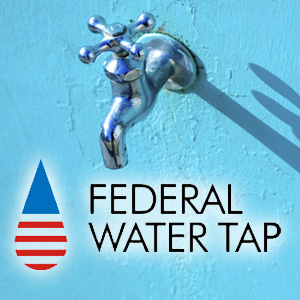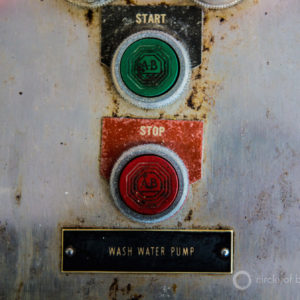Federal Water Tap, July 24: EPA Invites Dozen Water Projects to Apply for New Infrastructure Loan Program
The Rundown
The infrastructure projects are big and small, mostly public but some private. The Senate votes today to confirm a California farm lobbyist as second in command at the Interior Department. An inspector general report concludes that the EPA needs to improve its oversight of state drinking water programs. Continuing its reversal of the previous administration’s policies, the EPA seeks to allow mine waste to be dumped into Alaska streams near the proposed Pebble mine. A Tennessee representative has concerns about a coal plant’s groundwater pollution. Canadian and U.S. environment agencies release an annual Great Lakes health checkup. Drought intensified in the northern Great Plains. And lastly, the U.S. Geological Survey maps four decades of groundwater levels and land subsidence near Houston and identifies the saltiest springs in California’s Sierra Nevada.
“EPA intends to loan the requested amount to all 12 projects for a total of $US 2.3 billion. However, the selected projects are not guaranteed loans. Selected projects must still submit an application for a WIFIA loan, pass a creditworthiness assessment, negotiate a mutually agreeable term sheet, and execute a credit agreement to receive WIFIA funding.” — Enesta Jones, EPA spokeswoman, in an email to Circle of Blue about the projects invited to apply for a new federal water infrastructure loan program called WIFIA.
By the Numbers
12: Water infrastructure projects, out of 43 submissions, invited to apply for WIFIA loans. The largest requested loan is $US 625 million for improvements to a San Francisco wastewater plant. The smallest is $US 22 million for a water treatment facility in Oak Ridge, Tennessee. Two of the projects are for private utilities. WIFIA loans, which have a low interest rate, can cover up to 49 percent of a project’s costs. (U.S. Environmental Protection Agency)
5: The saltiest springs in California’s Sierra Nevada range each of which is located within a narrow geographic band and is at the bottom of a major canyon. Native Americans, centuries ago, carved evaporation basins into granite rock near the springs to gather salt. (U.S. Geological Survey)
News Briefs
Interior Confirmation Vote
The Senate votes today to confirm David Bernhardt, a D.C. lobbyist for one of California’s largest farming districts, to be deputy secretary of the Interior Department. Emails from Bernhardt reveal that he lobbied for Westlands Water District even after he said last November that he had stopped doing so, according to the Center for Investigation Reporting. The emails were obtained by the Planning and Conservation League, an environmental group.
House Subcommittee Works on Drinking Water Bill
The bill would make small changes to the Safe Drinking Water Act: allow communities the right to know of chemicals stored upstream of their water source, increase authorized levels of a loan fund, expand the uses of that fund, and extend the loan repayment period for poor areas.
House Passes Energy Bills
Two bills, to be exact, both related, in their own ways, to water.
The Promoting Cross-Border Energy Infrastructure Act, introduced by Markwayne Mullin (R-OK), replaces the current “presidential permit” process, which was established by executive order and requires the State Department to issue permits for oil pipelines, like Keystone XL, that cross international borders.
The bill instead puts the Federal Energy Regulatory Commission in charge of oil and natural gas pipelines, and the Department of Energy in charge of transmission lines. The bill also sets deadlines for when the agencies must issue permits.
The other bill amends the Federal Power Act to encourage the development of small hydropower projects. Currently, a hydropower project installed in a conduit — a pipeline or canal, generally — is exempt from the licensing process if it is less than five megawatts. The bill eliminates the five-megawatt cap. The bill also shortens the time frame for issuing a licensing exemption from 45 days to 30 days. There have been no national assessments of hydropower potential from adding turbines to conduits, but it is assumed to be far less than adding turbines to dams without them. Conduit projects, however, can have significant local benefits.
The House has been so active recently because the representatives begin a five-week summer holiday on Saturday.
Speaking of Pipelines
The Federal Energy Regulatory Commission published its final environmental review of the Atlantic Coast pipeline, which would deliver natural gas from West Virginia to Virginia and North Carolina through more than 600 miles of pipe. Dominion Energy, the developer, needs permits from a slew of agencies, including the Army Corps for drilling beneath streams and the U.S. Forest Service for crossing two national forests.
Senate Budget Work Continues
The Senate Appropriations Committee approved spending bills for the Army Corps of Engineers and Bureau of Reclamation, and U.S. Department of Agriculture. In general, funding is within two percent of 2017 levels for the Army Corps and Reclamation. The committee preserved the rural water grant and loan program, which President Trump sought to eliminate.
Congressman Concerned about Coal Plant’s Water Pollution
Rep. Steve Cohen (D-TN) sent a letter to state environmental officials asking questions about groundwater pollution. Monitoring wells at the Allen Fossil Plant, a coal power station near Memphis, show high levels of arsenic.
Studies and Reports
EPA Needs to Improve Oversight of State Drinking Water Programs
That’s the conclusion of a report from the Office of the Inspector General. The report identified two areas in which oversight could improve: more comprehensive reviews of state programs, which occur every few years, and ensuring the accuracy of state drinking water quality data submitted to federal databases.
Most states have been granted authority, called primacy, to monitor and enforce the provisions of the Safe Drinking Water Act. EPA officials informed the inspector general that they are taking steps to address the deficiencies noted in the report. Steps include: standardizing performance reviews and using electronic data reporting, which the agency anticipates will reduce errors.
Great Lakes Health Check
“Fair and unchanging.” That’s the summary statement from an annual Great Lakes environmental assessment from Canadian and U.S. agencies. Not all is static, though. The lake system is trending downward on invasive species and algal blooms but improving on toxic chemical concentrations and beach water quality.
Setting the Stage for Pebble Mine Development
The EPA moved to revoke an Obama administration decision that prohibited mine waste from being dumped in three streams that drain into Bristol Bay, in southern Alaska. The Pebble region is one of the world’s largest deposits of copper and Bristol Bay is one of the world’s largest sockeye salmon fisheries. In May, the EPA said it would reconsider the previous administration’s mining ban in the region and allow the company to apply for a federal permit.
Subsidence and Groundwater Levels in Houston Area
The U.S. Geological Survey produced an interactive graphic from four decades of groundwater and subsidence data in the Houston area. Maps and graphs shows the annual and cumulative change in soil compaction and well levels.
On the Radar
Drought Watch: Northern Plains
Dry conditions intensified in eastern Montana and North Dakota, with parts of both states seeing “exceptional” drought, the worst rating in the weekly U.S. Drought Monitor.
Reclamation Leader Tours Klamath Basin
Alan Mikkelsen, the acting director of the Bureau of Reclamation, toured the Klamath River Basin last week, according to the Herald and News. The basin, covering parts of southern Oregon and northern California, exemplifies the multiple interests in play in western watersheds: fisheries, tribal rights, agriculture, dams, and wildlife refuges. Mikkelsen is the bureau’s point person for the basin.
A U.S. Geological Survey assessment, meanwhile, found that the status of two endangered fish species in Upper Klamath Lake “remains worrisome.”
Small Water System Finance Course
The EPA and the University of North Carolina’s Environmental Finance Center are hosting a one-day financial course for small water systems. Open to the eight states of EPA Region 4, the course covers rate setting and financial planning.
Federal Water Tap is a weekly digest spotting trends in U.S. government water policy. To get more water news, follow Circle of Blue on Twitter and sign up for our newsletter.
Brett writes about agriculture, energy, infrastructure, and the politics and economics of water in the United States. He also writes the Federal Water Tap, Circle of Blue’s weekly digest of U.S. government water news. He is the winner of two Society of Environmental Journalists reporting awards, one of the top honors in American environmental journalism: first place for explanatory reporting for a series on septic system pollution in the United States(2016) and third place for beat reporting in a small market (2014). He received the Sierra Club’s Distinguished Service Award in 2018. Brett lives in Seattle, where he hikes the mountains and bakes pies. Contact Brett Walton






